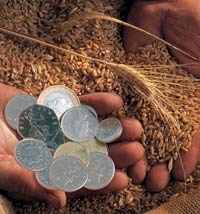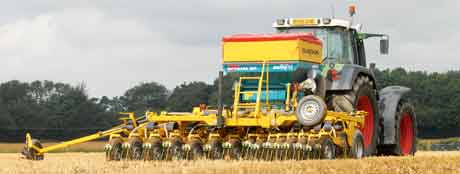Plenty of scope to cut arable production costs

There is still scope for massive production cost savings on many farms, but high land values and low interest rates for some businesses provide a cushion which removes the immediate incentive to make changes, says consultant Sebastian Graff-Baker of Andersons Midlands.
Some farms could save as much as £30-50/t on winter feed wheat production costs by targeting labour and machinery costs, in particular, he says.
“There may be no need to go for an all-or-nothing option such as full machinery and labour sharing. Identify people you would be able to work with and discuss forthcoming machinery replacement.
“If a you and a neighbour will both need to replace a significant machine in the near future, consider sharing just one piece of kit. By dovetailing replacement dates on just one machine, you will find out if it works without burning your bridges. More often than not, this approach quickly leads to sharing on a greater scale and a big reduction in costs.
“We have got farms making quite good profits at current prices, but they have had to work very hard at it. Machinery replacement plans should be in place for the next five to eight years so that different options can be weighed up.
“In five to 10 years, SFP could well be at the £100-150/ha level and that’s what we have to plan for. Unless you can get operation costs down to a good level, you have to think about wholesale changes. With the right structure, it is realistic to aim to convert a minimum of 15% of turnover into profit.”
Although reluctant to generalise, Mr Graff-Baker says tenanted farms are often among the more efficient because they do not have high asset values with which to absorb losses.
“Across a range of typical combinable crop farms, variable costs account for just a third of production costs, while fixed costs represent two-thirds. While yield is still king, there is very little growers can do about feed, seed and fertiliser costs, but a great deal they can do to reduce overheads.”
Inertia is compounded by losses being hidden by subsidy, so that when growers really examine their businesses, it comes as a shock to find what the real position is, says Mr Graff-Baker.
“The industry has made the same mistake as in the past, re-equipping on the back of high prices and creating a high cost structure which lower prices can’t support.

A simple machinery-sharing agreement can soon grow in to a bigger-scale arrangement which can cut production costs significantly
“The 2008 harvest looks quite profitable for many businesses. Despite being an expensive crop to grow and harvest, many achieved yields of 10t/ha. 2009 looks like being very different. We know it has being grown largely with expensive fertiliser and, given the weather in spring and summer, I’d be surprised if it yields anything like 2008.
“Feed wheat production costs for the 2008 harvest averaged £107/t and milling wheat £113/t on the groups of farms I’m involved with. These costs have imputed rent, property and working capital cost. On the same basis I suspect we could add £10-15/t quite easily for this year, so yield is obviously still the key.
“At the same time we’ve had a further reduction in prices recently for which there doesn’t seem to be any fundamental reason, so a lot of grain will say in farm stores this autumn and the cash-flow implications of that have to be thought through.
“If we get low yields and continued low prices, there will be some big deficits from the 2009 crop and people will have to start looking at the overall impact of this. There will be less cash around from the 2009 crop, but some big tax bills on the back of 2008 which may fall due in January 2010.”
Growers need to especially consider the impact of break crops on overall profitability, says Mr Graff-Baker. “Break crops carry the biggest risk in terms of the gap between production costs and selling price. Their variable costs are an even larger proportion of total production costs.”
While admitting there are no easy answers, he says people should think carefully about establishing crops if they are not going to show a profit.
“But it’s more complicated than that because of the dedicated cost structures which people have. That’s why it’s so important to start looking at how you can change that structure. It’s a contradiction that we have low or no profits on many farms at a time of high capital values.”
For some growers, there will be the chance to grow break crops for a more specific market, such as maize for a dairy neighbour, or a short rotation grass crop for a specific end user.

